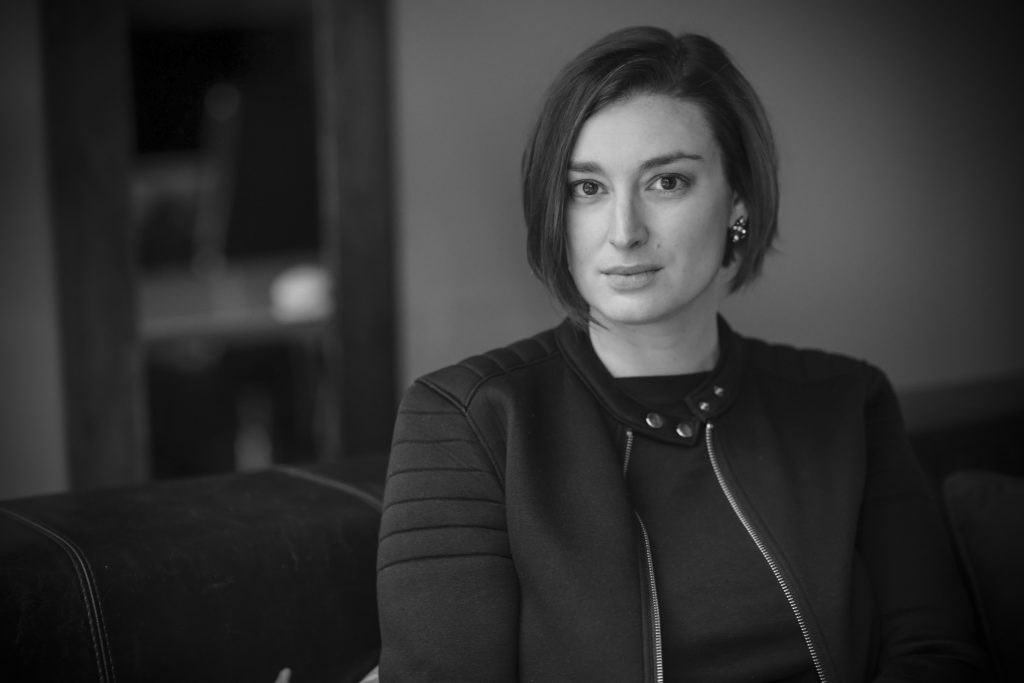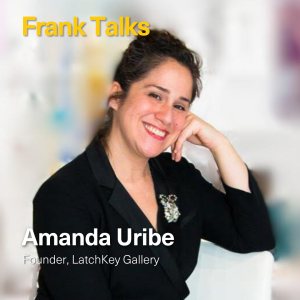Leah Triplett Harrington is a curator, writer, and editor. As curator for Now + There, she facilitates the Public Art Accelerator and organizes large-scale public art commissions. She is editor-at-large for Boston Art Review. Her writing has most recently appeared in those publications and ArtNet News, Sculpture, Public Art Dialogue, Flash Art, Hyperallergic, WBUR, Big Red & Shiny, and The Brooklyn Rail. She is also a founding editor of the publication and platform The Rib. As an independent curator, she has organized projects for Boston University Art Galleries, Trestle Gallery, Herter Gallery, and others. A believer in mentorship, she teaches in the School of Visual Arts at Boston University and, in 2021, was the inaugural curatorial mentor for Praise Shadows Art Gallery.
What was the most important thing you learned at your first job in the Arts?
My first job in the arts was an internship at 1708 Gallery in Richmond, VA, a non-profit exhibition space close to where I grew up. It totally opened my eyes to an art world beyond the slide lectures of my art history classes. I got to do a little bit of everything (prophetic given the many hats one wears in the arts!), and through that, got to interface with everyone from the Executive Director to exhibiting artists and board members. I noticed that no matter their role in the gallery, everyone was also a practicing artist, meaning they balanced their work in the art community with their own studio based practice. It helped me understand that an art practice is not a solitary pursuit.
I also got to help artists install and deinstall their projects…so I learned that exhibition producing is not a glamor fest!
How did you begin working as an art curator and editor? What have been the most rewarding and challenging aspects over the last couple years?
Oh man, where do I start?! I’d say that whatever project I’m working on–writing, editing, curating–is really inspired by my desire to connect with other people…as cheesy as that sounds! But I’m really curious about the person who makes art–what drives them to create, what keeps them creating? How can artists come together in community with others? How can we create and sustain more equitable arts ecosystems? These are the larger questions that keep me doing what I do.
So to answer your question, I started writing and editing as a way of continuing a critical engagement with art after school. I’d read certain “webzines” religiously (not to date myself, but this was still the early-ish days of blogs). I finally got up the nerve to pitch some publications I really admired and was ecstatic to have my first publications read. I love the sustained engagement that comes from writing about an exhibition, artwork, or artist, and building an argument or a thought in words. Editing was a way to continue my love for cultivating conversation and community–I found that I love working with other writers to develop their critical voice or arguments. I see writing and publications (print or digital) almost like objects, with each piece building a whole structure. I love putting all the pieces together.
Curating was an exciting and natural extension for me. An article I wrote on the 1980s Boston art scene became the catalyst of an exhibition I co-curated with Lynne Cooney and Evan Smith in 2018 for Boston University Art Galleries. This was the first time I experienced exhibition making in the same way I experienced writing and editing. Having people come to the show, make connections between themselves and other art works…this keeps me going despite all the setbacks and challenges.
You recently curated an exhibit named “shape_shifting_support_systems” with Mallory Ruymann at Praise Shadows Art Gallery in Boston, can you tell us more about this project?
“shape_shifting_support_systems” came from years of dialogue with my friend and collaborator, Mallory. We are good friends, and have offered each other advice, feedback, encouragement on our respective writing, editing, curatorial projects…really anything work related and otherwise! As Mallory was developing a concept around weaving and painterly practice, our conversations about it naturally flowed into a full-fledged co-curated collaboration, and it feels like this project is really a testament to our support of each other.
But more specifically, the show highlights the ways in which contemporary and historical craft practices offer modes of merging material and political expressions. For the artists included, Bhen Alan, Emily Auchincloss, Natiana Alexandra Fonseca, Jeffrey Nowlin, Loretta Park, and Denise Treizman, the support system – a grid, a warp, stretcher bars – is a formal and conceptual material to exploit, imbuing ways of being into the space where weaving and painting meet. The show really felt like less of an exhibition and more of an extended conversation between practices and objects, one that I hope continues now that its closed!
As an editor for The Rib, you have had an opportunity to look at underexposed art communities around the United States. What is one art community that you wish more people knew about?
My first thought is the art scene around North West Arkansas. Yes, Crystal Bridges is there, but there is also an incredible community of artists living and working in the area not necessarily connected to the museum. Ceramics in particular seem to be thriving there!
But people also might know about the area through its major institutions, so my second thought is Illinois, anywhere outside of Chicago. The gallery apartment model that proliferated in Chicago a few decades ago seems to have given way to some fascinating models for exhibition in artist-run initiatives there.
What is the best piece of advice you can give about working in the art world?
Don’t let people take advantage of your passion! Or your kindness. Also always measure twice.
How do you think the art world can become more transparent?
Well, if I had to pick just one way…I’d say more open discussion on what we pay art writers. The conversations around pay equity in museums have been so exciting to see unfold in the last few years, and I’d love to see art writing catch up. Fees vary from publication to publication, and it’s always a little vague to say the least.
Art writing is so much more valued monetarily than it was when I was first starting out…but we still have a ways to go. I don’t think we’ve figured out the funding structures for independent arts writing yet (in this country), and I’d love for the art world and all its ecosystems to really think about how we better support and sustain the vital connective tissue of art writing.
What is the best exhibition you have seen recently?
I had the opportunity to visit CHART Art Fair in Copenhagen in August. It was a truly beautiful fair, with an art book fair, artist-run projects, and blue chip galleries all mixed together. I really appreciated how the fair considers the art ecosystem as a whole.
Here in Boston, I loved the curatorial collaboration between Gina Mudge and Renee Anderson that brought us “We Interrupt This Program,” a group show of twelve emerging artists using everyday materials or scenes to disrupt the familiar or mundane.
If you could own work by 5 different artists, who would be in your collection?
I LOVE this question! I’m fortunate enough to live with artworks by many artists I admire, but if I had to add five more to the fold, I’d have to say Derrick Velasquez, Linda Lopez, Amelia Briggs, Natalie Baxter, Aaditi Joshi…do I have to pick just five?




